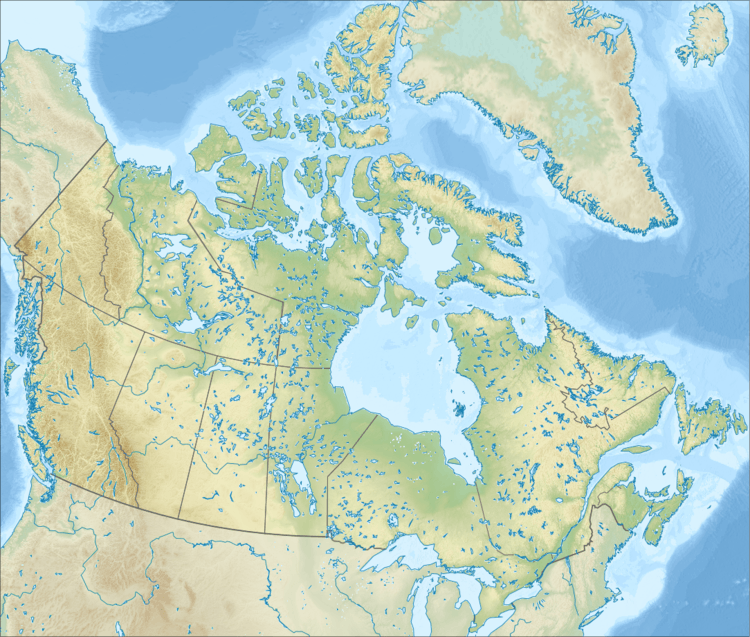Beattie Peaks Formation
The Beattie Peaks Formation is a geologic formation of Early Cretaceous (Valanginian) age in the Western Canada Sedimentary Basin that consists primarily of marine mudstone. It is present in the northern foothills of the Canadian Rockies and the adjacent plains in northeastern British Columbia.[2][3][4]
| Beattie Peaks Formation Stratigraphic range: Valanginian | |
|---|---|
| Type | Formation |
| Unit of | Minnes Group |
| Underlies | Monach Formation |
| Overlies | Monteith Formation |
| Thickness | maximum 460 m (1,510 ft) |
| Lithology | |
| Primary | Mudstone |
| Other | Siltstone, sandstone |
| Location | |
| Coordinates | 53.7833°N 122.5833°W |
| Region | |
| Country | |
| Extent | Western Canadian Sedimentary Basin |
| Type section | |
| Named for | Beattie Peaks |
| Named by | W.H. Mathews, 1947[1] |
 Beattie Peaks Formation (Canada) | |
Lithology
The Beattie Peaks Formation consists primarily of dark grey to brownish grey or black mudstones that contain abundant organic matter and are extensively burrowed. Interbeds of argillaceous siltstone and fine-grained sandstone increase toward the top of the formation.[2][4]
Environment of deposition
The Beattie Peaks Formation was deposited in marine and prodeltaic environments within the Western Interior Seaway.[2]
Paleontology and age
The age of the Beattie Peaks Formation has been determined from its fossil fauna, primarily species of the bivalve Buchia. The formation has also yielded other fossil bivalves, ammonites, and microfossils. Trace fossils made by burrowing organisms are common in its mudstones.[2]
Thickness and distribution
The Beattie Peaks Formation is present in the foothills of the Canadian Rockies and the adjacent plains in northeastern British Columbia, extending from the Prophet River to south of the Pine River. It reaches a maximum thickness of 460 m (1,510 ft) in the western foothills and thins eastward.[2]
Relationship to other units
The Beattie Peaks Formation is part of the Minnes Group. It was deposited conformably on the Monteith Formation and is conformably overlain by the Monach Formation, both of which also belong to the Minnes Group. To the south it grades into the lower part of the Gorman Creek Formation.[2][3][4]
See also
- Various Contributors to the Paleobiology Database. "Fossilworks: Gateway to the Paleobiology Database". Archived from the original on 31 July 2014. Retrieved 8 July 2014.
- List of fossiliferous stratigraphic units in British Columbia
References
- Mathews, W.H. 1947. Geology and coal resources of the Carbon Creek, Mount Bickford map area. British Columbia Department of Mines, Bulletin 24, 27 p.
- Stott, D.F. 1998. Fernie Formation and Minnes Group (Jurassic and lowermost Cretaceous), northern Rocky Mountain foothills, Alberta and British Columbia. Geological Survey of Canada, Bulletin 516.
- Canadian Society of Petroleum Geologists and Alberta Geological Survey (1994). "The Geological Atlas of the Western Canada Sedimentary Basin, Chapter 18: Jurassic and Lowermost Cretaceous strata of the Western Canada Sedimentary Basin". Compiled by Mossop, G.D. and Shetsen, I. Archived from the original on 2016-07-01. Retrieved 2016-06-20.
- Glass, D.J. (editor) 1997. Lexicon of Canadian Stratigraphy, vol. 4, Western Canada including eastern British Columbia, Alberta, Saskatchewan and southern Manitoba. Canadian Society of Petroleum Geologists, Calgary, 1423 p. on CD-ROM. ISBN 0-920230-23-7.